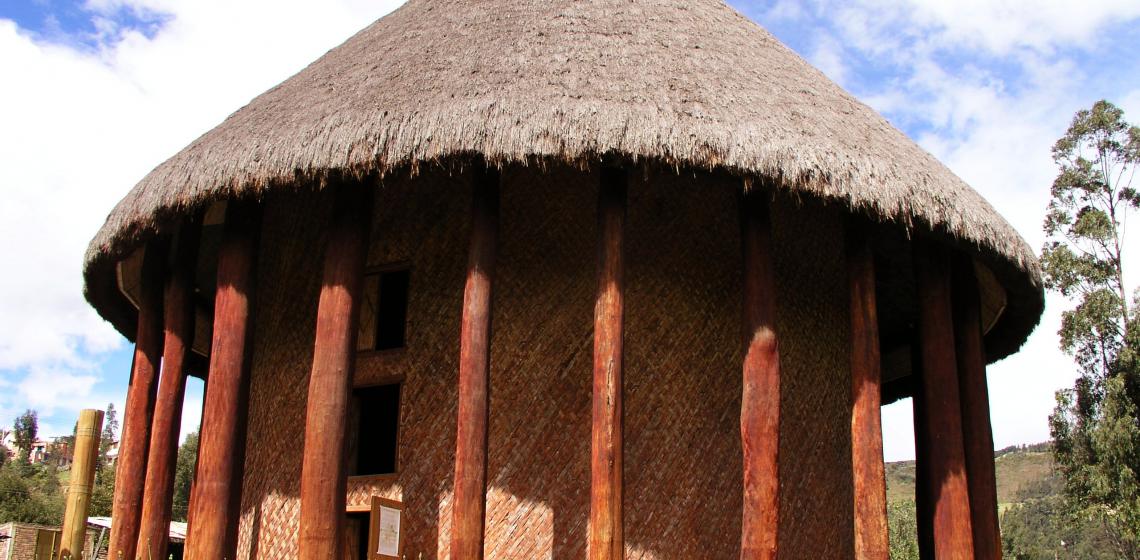Museo Arqueológico - Eliécer Silva Celis (CO)

The reconstruction of the Templo del Sol (Temple of the Sun) by the archeologist Eliécer Silva Celis gave birth to the Museo Arqueologico de Sogamoso, Colombia, in 1952. The area where it is located, in the Cundiboyacense plateau, was identified as ancient Muisca territory, after the discovery of four necropolis hosting four hundred bodies wrapped in funerary attire and surrounded by diverse artefacts and instruments.
From this discovery, Silva Celis took on the reconstruction of the Templo del Sol, relying on historical and ethnographic documents, and archeological excavation evidence. The archeologist rebuilt the greatest center of spiritual power for the Muiscas, which had been burnt to the ground by Spanish soldiers around 1537.
This Temple was at the heart of the Muisca nation, considering the wealth that it guarded inside. It was constructed in a circular shape, with beams on every side to provide support. The roof was made of straw. The Temple was a central location for the Fiesta del Huan or Zocán celebration. This consisted in diverse dancing outside and inside the temple, following the rhythm of traditional drums and warfare chants. Chyquy muisca (priest) was to clean everyone participating by blowing tobacco smoke onto their extremities, pelvis and back. Once purified, they could join the main dancing space around the central post inside the Temple. Participants are supposed to dance around it three times and exit the Temple through the occidental door, where they will have natural lotion rubbed against their wrists.
The Temple, Museum and archeological reserve have the largest collection of Muisca artifacts in the country, with more than 4000 objects in its archeology and ethnography collections. They host several weekly activities to immerse oneself into the Muisca tradition, like guided tours on topics such as the Muisca first settlement, exchange and Muiscan economy, cosmovision and mythology. They also have archeology workshops and a Cineforo to project ethnographic content. Their café sells products made with the ancestral plant of medicinal Coca, frequently used by in Muisca preparations.
Sponsored by: Universidad Pedagogica y Tecnologica de Colombia.
Sources
Alcaldia de Sogamoso: http://www.vivesogamoso.com.co/index.php/actividades/que-hacer?id=123&n…;
Geografia cultural de Boyocá: http://www.boyacacultural.com/index.php?option=com_content&view=article…;
EcuRed: https://www.ecured.cu/Museo_arqueol%C3%B3gico_Sogamoso
Universidad Pedagogica y Tecnologica de Colombia : http://www.uptc.edu.co/vie/extension/unidades/museos_uptc/mus02_gal
Gómez-Montañez, P. F., 2011. Patrimonio y etnopoliticas de la memoria: el pasado como aparato ideologico en la fiesta del Zocan en el Templo del Sol de Sogamoso. Antipoda 12(262), pp. 165-186.: https://revistas.uniandes.edu.co/doi/pdf/10.7440/antipoda12.2011.09
